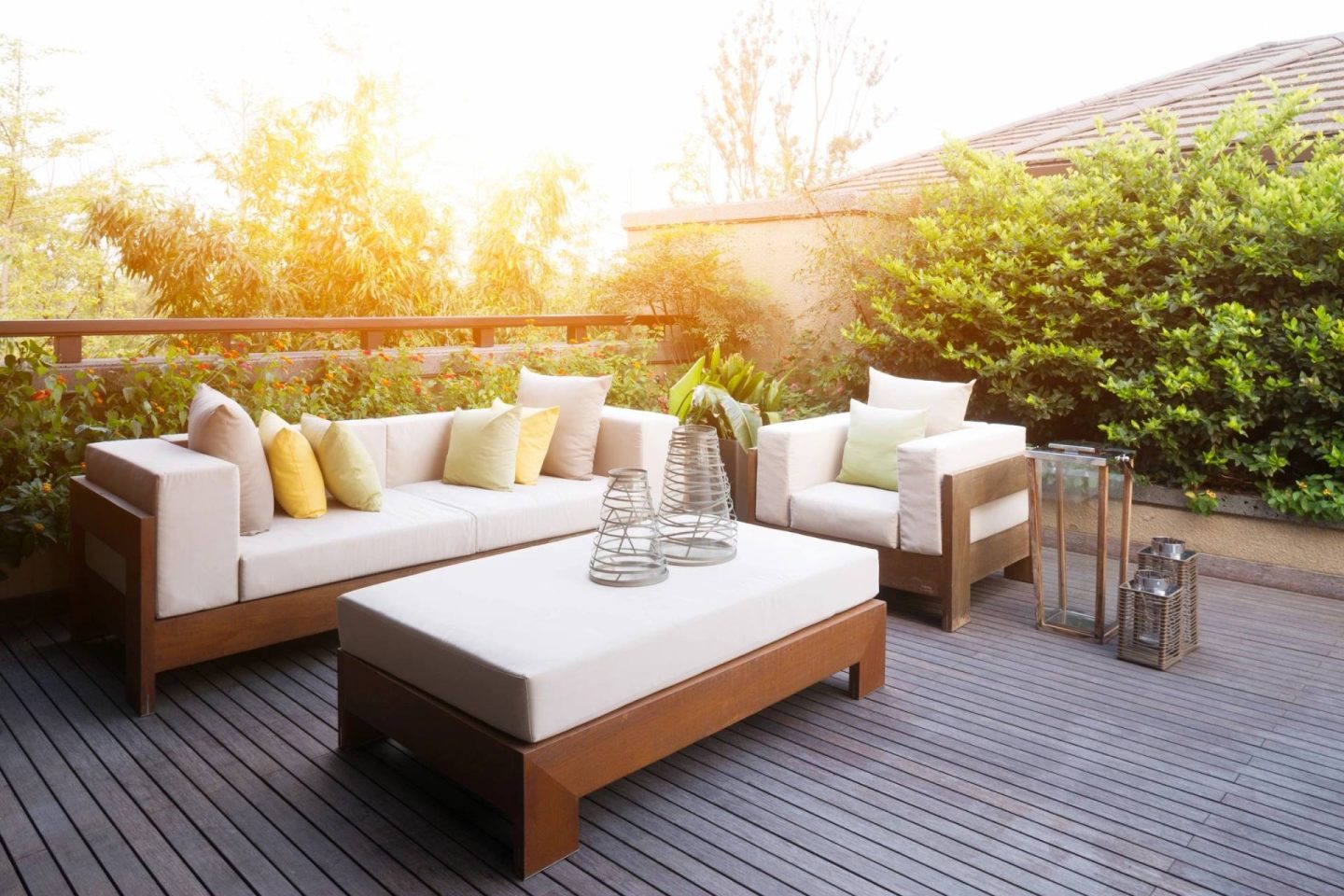*Collaboration
A deck can provide a truly incredible outdoor space. From simple designs to multi-level decks, UK research shows many reasons your home deserves a deck, including offering a perfect space for entertainment, providing a custom look, and increasing your property’s value. However, this requires much thought and decision-making to get it right.

If you want to add a deck to your outdoor space, here are nine essential things to consider.
Set a budget
The amount of money you’re willing to spend on a deck will determine the deck’s size, layout, and components. Factor in permits and labour if you want it planned and built by an expert. Consider the additional deck features you want, including handrails, flower boxes, built-in seats, and lights. You can also consider constructing your own deck to save money. With extensive reading and tools, you can build a simple, neat deck that boosts a classic appearance. But for an intricate platform deck, you must be a skilled DIYer or leave it to the professional. That is because attempting to cut costs by DIYing a project beyond your skill set can backfire and costs you even more to complete. Several factors will influence the total cost of your deck, such as the size and intricacy of the architecture, what components you use, and the quantity of labour necessary to create it. According to redesigning experts, a simple deck will cost around £14 per square metre, with a professional charging a flat rate of £40 to £50. However, it is worth noting that superior material quality and very intricate designs could cost you more.
Consider the deck’s purpose and function
Decks are adaptable and multifunctional. You can use it one night to entertain guests and enjoy a romantic sunset alone on another night. Strive for a layout that reflects your hobbies and activities to get the most you can from your new deck. Do you like the sun or the shade? A beautiful view or privacy? If you want to have meals on the deck frequently, make it convenient to navigate between the dining space and the cooking area. Build an outdoor kitchen and include a bump-out for a dining set and chairs if it’s within your budget.
Don’t ignore code and permit requirements
Building permits should not be an issue if you pick a trustworthy constructor. If you’re a handyperson, obtaining a building permit is a legal obligation and an opportunity to enhance your design by meeting with building officials. Many professionals are available to provide basic guidance to answer frequently asked questions and supply drawings of crucial building elements. Follow the law and the construction code to avoid any unplanned stoppages and project delays and avoid the need for costly revisions.
Factor in the location
Choosing the optimal location for a deck can sometimes be straightforward, while other times, it may require considering multiple possibilities. In such cases, the intended functionality of the deck will play a vital role in determining the ideal spot. Additionally, you must consider several other factors when selecting the deck’s location, including scaling the deck proportionally to the size of the property, considering microclimates that can impact the deck’s comfort level, and positioning the deck to balance sun and shade for enhanced comfort and to enjoy the view. Working with a professional company like Minster Decking will allow you to ensure that your deck is designed and installed to perfectly suit your needs, while taking into account the property’s layout, aesthetics, and environmental factors. Collaborating with experts can also help you maximize the deck’s durability and functionality, ensuring it becomes a seamless extension of your living space. It can also be useful to evaluate wind patterns affecting your deck’s usability. These will help you decide on the deck’s location, creating a harmonious and functional outdoor living space that meets your needs and preferences.
Know your deck material alternatives
Wood is not the sole decking material option on the market. Various decking materials are available, each with unique properties, advantages, and considerations regarding cost, maintenance, durability, and performance in different weather conditions. Pressure-treated woods like cedar and redwood can be weather-resistant, while premium hardwoods like ipe and teak are exceptionally durable and can last longer. You can also use composite decking materials, PVC, and plastic planks. Aluminium decking is notably slip-resistant, making it ideal for wet areas but also relatively expensive. You can search online to view more options of suitable materials for constructing a low-maintenance deck.
Use built-in features
Depending on your added features, you can transform your deck into a haven for relaxation, entertainment, and embracing the outdoors. Consider integrating built-in features that enhance functionality and comfort to boost your deck’s potential. One idea is to incorporate a built-in bench or seating area, providing a comfy spot to unwind while relishing the scenery and offering extra storage space for outdoor essentials like cushions and pillows. A built-in bar or prep area for frequent entertainers can streamline drink and snack service, contributing to a more organised and tidy gathering. Additional desirable built-in features for your deck include planters, fire pits, and water. Whichever features you select, seamlessly integrate them into your deck design to create a stylish and highly functional space.
Explore personalisation
Lights are a great way to personalise your deck while making it more secure. Low-voltage lights are popular due to their small size and ease of installation, yet many additional options exist. You can install modular lights supplied by decking providers for a neat, professional appearance. It blends well with posts, railings, deck planks, and stairs. Ensure your deck furnishings are comfortable, attractive, and weatherproof. Try out your existing furniture or buy affordable items you can change after you understand how you see the area. This way, you can save costs. Also, consider building box benches with movable seats for storage. If you have an elevated deck, there may be enough space underneath to store equipment, water toys, or holiday equipment.
Think privacy
There isn’t always an ideal location for a deck. Sometimes it’s necessary to compromise for a less-than-private location. Consider installing privacy screening if your deck is exposed to neighbours or if you can see their yard. There are several privacy screen ideas. For instance, you can erect a screen into the deck or use dense evergreen plants as a privacy barrier. These plants come in various shapes, sizes, and colours and can filter noise while offering a lush backdrop.
Adding a deck to your house is a terrific way to enlarge and make it more pleasant. However, it would help if you were mindful that a great deal goes into planning, building, and completing a deck. Considering the above tips, building a deck should be straightforward with minimal stress.
